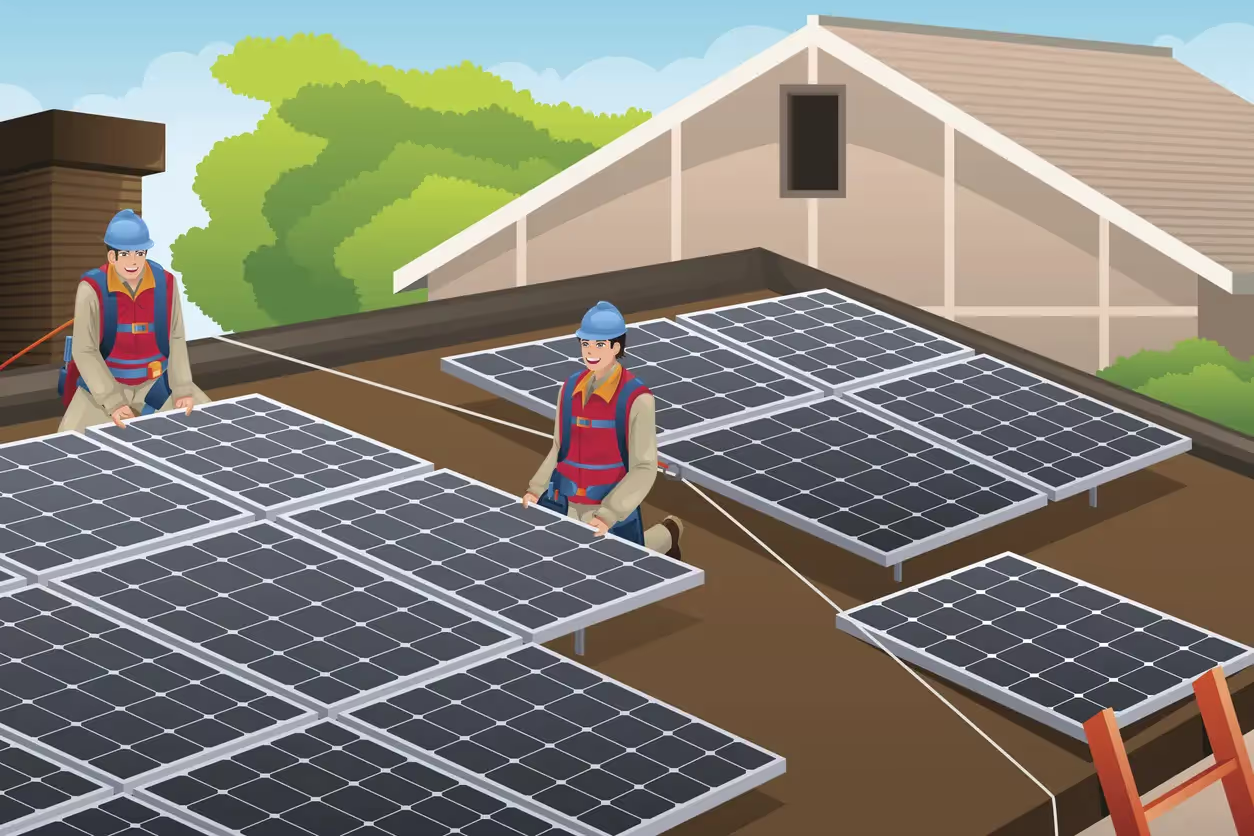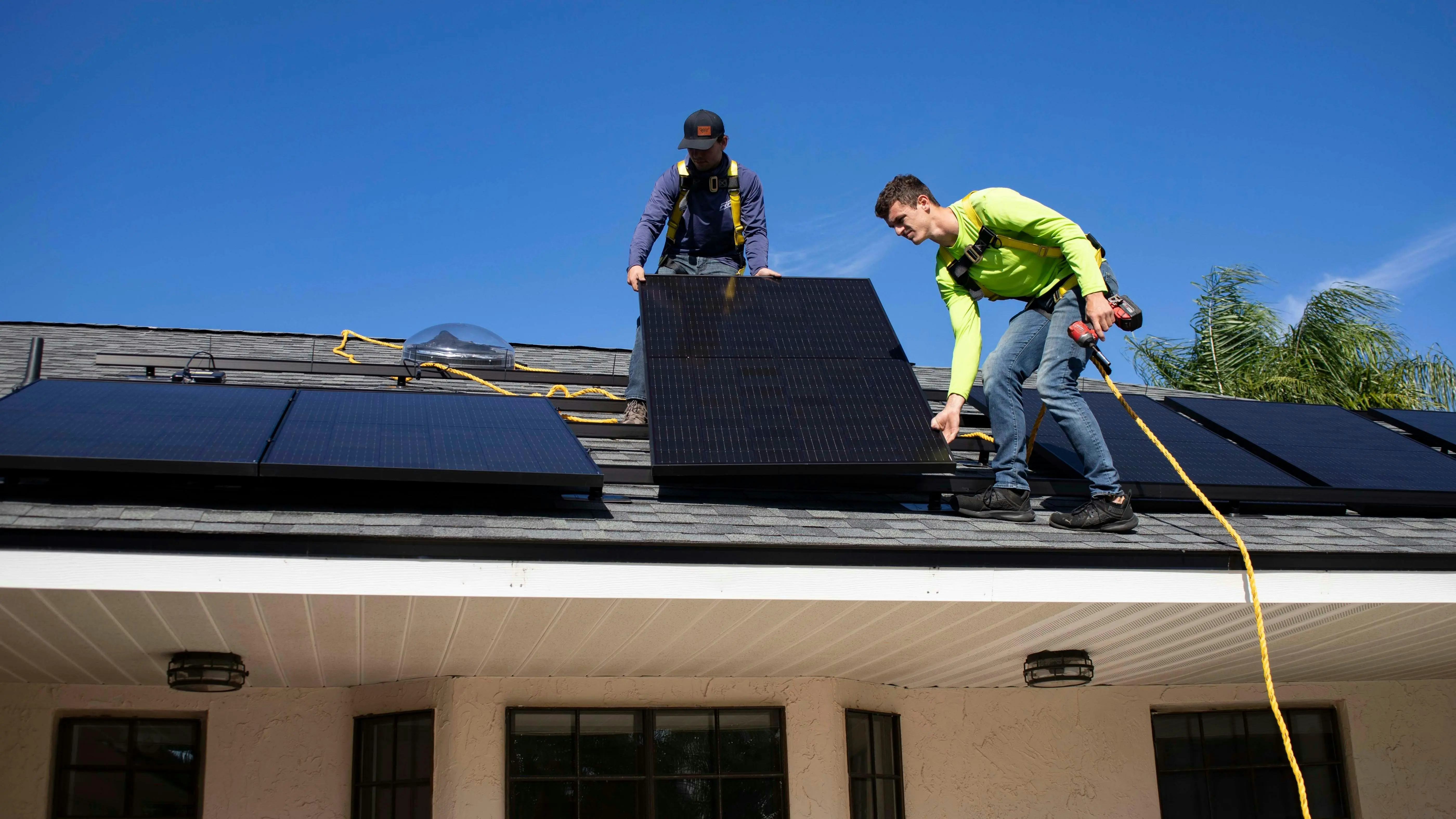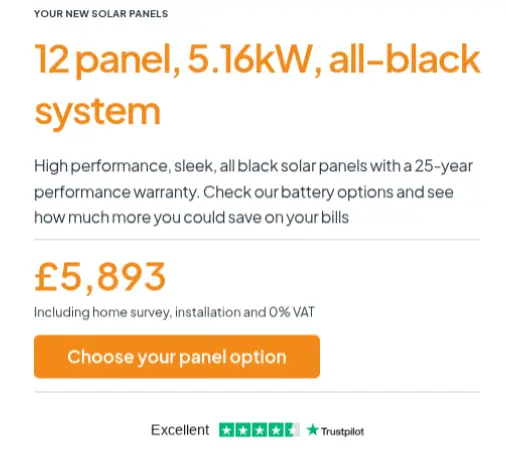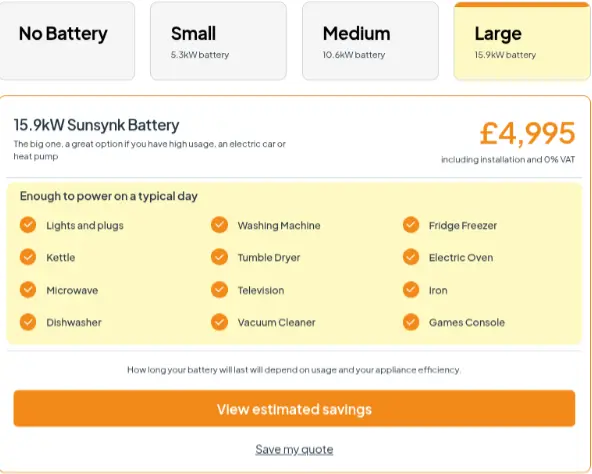
10kW solar panel systems are much larger than average. A typical UK household generally is suited to a system in the 3kW-6kW range. Alongside a small (5.3kWh) solar storage
battery, which may help increase electricity self-sufficiency for many households because the solar energy can be saved for when it is really needed, eg. in the evenings.
Small solar panel systems can be fitted for as little as £6,000. For a 10kW system, expect this cost to spike to around £8,000 (not including a storage battery). This system could
produce up to 8,000kWh of electricity per year and save homeowners £1,500-£2,000 annually.
Whilst a lot of properties could utilise the electricity generated from a 10kW system there are two main reasons homeowners don't fit them.

The first is simply the weight. A system of this size could weigh up to 600kg, and most roof spaces simply can't support this weight.
The second is size. A smaller 5.16kW system will only take up 30m², whereas a 10kW system is going to need around 60m². When you consider that only one or two sides of your roof might suitable for panels in a lot of homes (due to the orientation), the average property simply doesn't have enough available roof space for a 10kW system.
And finally, whilst DIY kits are available, we would avoid them. They tend to be put together using poor quality components. And, if they’re not fitted by a MCS registered engineer, the system won’t qualify for the Smart Export Guarantee; so you won’t be able to sell energy back to the grid at a good rate to make the most of excess generation.
Get prices on your solar panel system using our clickable solar panel tool here. Or, speak to one of our solar panel experts here if you have any questions.
5.16kW systems are the most popular we install. A basic system not including a battery sits at just under £6,000 via dwellow.
To upgrade this to a system with 10kW maximum output, you’d need to install a further 12 panels (24 in total), adding around £2,500 onto the total price. Expect to pay around £2,500 for a 10kW system without a solar storage battery or any solar panel optimisers (alhtough these are only applicable in some situations).

One option you have here, is to install a smaller system (such as the 5.16kW), and utilise a solar storage battery. Unless you can use electricity as it’s produced, it’s likely that this is going to be a better option than installing a 10kW setup. And, that’s not to mention that most properties won’t have the roof space to install 24 solar panels.
We have three battery options available including:
● 5.3kW: £2,495
● 10.6kW: £3,745
● 15.9kW: £4,995
By using even a 5.3kW battery, you can store a reasonable amount of electricity to be used at a later date. By comparison, if you install a 10kW system without a battery, the excess electricity will be sold back to the grid, or simply go to waste.
Use our solar panel tool here. You’ll be able to toggle between different battery and solar panel options, determine your electricity self-sufficiency, as well as getting fixed prices on-screen.
There is an age old arguement that you should put as many panels as you can fit on the sides of the roof that will work. This is because the panels themselves are not overly expensive anymore (circa £50-70 each for a 430-450w each from a reputable manufacturer), and the labour is already onsite, so the labour cost of each additional panel will also be quite attractive. The larger costs of getting roofers and electricians to the site in the first place, along with scaffold and the inverter, means that it's a good time to keep adding panels where possible (and where your budget permits).
A 10kW solar panel system is much larger than average. One of the most popular systems we fit is a 12-panel 5.16kW system that uses 450 Watt solar panels.
All solar installations over 3.68kW will need permission from the local Distribution Network Operator (DNO) to connect to the grid prior to the installation. It is often the case that they will apply a cap to the amount of electricity that can be exported (often 5-6kW, but it is possible to get much larger allowances, it is very much case by case and the state of the grid network in your area).
Let's use an example of a high consumption household, without a Heat Pump or EV; they might consume around 4,000kWh of electricity per year, for example, meaning a 10kW setup would be overkill, because if they have a 5kW limit on the export then they will experience what is known as "clipping". This is where they produce more electricity than they can use, and it exceeds their export limit, soit goes to waste. The excess could be directed to solar batteries to charge them, but there is a limit to how much capacity a battery will have before it is full.
| Energy Use | Example – home type and number of residents | Typical annual gas use (kWh) | Typical annual electricity use (kWh) | Typical annual electricity use (multi-rate, such as Economy 7) (kWh) |
|---|---|---|---|---|
| Low | Flat or 1-bedroom house; 1 to 2 people | 7,500 | 1,800 | 2,200 |
| Medium | 2–3 bedroom house; 2 to 3 people | 11,500 | 2,700 | 3,900 |
| High | 4+ bedroom home; 4 to 5 people | 17,000 | 4,100 | 6,700 |
However, if you're an extremely high electricity consumption household (10,000kWh per annum or higher), it may be worth installing a larger system such as a 6-10kW. Each case is unique and it's important to consider all the variables.
Whilst a 5kW system technically produces enough electricity to power small properties, it’s when it produces it that’s the problem. The most productive times of the day for solar panels are 10am-4am; when most people are at work.
This is why the majority of customers choose to add a solar storage battery to their system. They’re able to generate electricity in the daytime, store it in their battery, and use it in the evening. All of our systems come with 3 different battery options:

A small 5.3kW battery costs £2,495, a medium 10.6kW battery costs £3,745 and the largest (15.9kW) costs £4,995.
Speak to our solar experts here to determine whether a larger system or a larger battery is the best option for you.
Whilst a 10kW solar panel system could be suitable for your property, the big question is, do you have enough space?
A typical 12-panel 5kW system would require around 30m² of roof space. And generally, one side of your roof will be more productive than the other. Therefore, to fit a 10kW system, you’d potentially need around 60m² of roof space, and that’s on just one side of your roof; this would be a substantially sized property.
Of course, you do have other options if you don’t have space on the main roof of your house. You could either utilise space on a flat roof or if you have space in the exterior grounds of your property, they could be ground mounted.
And, there’s another worthy consideration; weight. A 5kW solar panel system (PV modules, mounts etc) is likely to weigh somewhere around 300kg. Double this for a 10kW system (600kg). That’s a substantial amount of weight to be putting on a roof. For this size system it would be important to get an assessment by a structural engineer.
Put simply, the average 2-4 bedroom property is limited to what size solar panel system they can have installed, simply due to lack of suitable roof space and the amount of weight their roof can hold.
Working out exactly how much electricity your 10kw solar panel system will produce isn't exactly easy, due to the amount of variables.
A few factors that affect the electricity production of your solar panels include:
With a typical 5kW system producing around 4,000kWh of electricity per year (30 degree slope, London and south facing), you'd could expect a 10kw system to produce around 8,000kWh of electricity per year with the same variables.
Remember, if you're not using the exact amount of electricity that's being produced you'll:
● Waste it
● Need to sell it back to the grid via the Smart Export Guarantee scheme
● Store it in a solar storage battery
If you’re consuming 8,000-10,000kWh of electricity annually, it’s likely to cost anywhere from £2,000-£2,600 (using the current energy price cap from Ofgem). It is hard to guage how much electricity will be produced by your roof, and how you will be able to utilise it (battery and / or export) without knowledge of what export limits might be put in place and what tariff you are going to use. Get in touch to go through all these variables with our experts.
We get asked a lot whether installing solar panels on a DIY basis is an option. Whilst there are plenty of 10kW DIY solar panel kits available, their components tend to be sub-par.
And, whilst they seem to offer reasonable value for money, it’s likely even after taking on this mammoth DIY project, you’ll actually lose out.
All of our solar panel installations qualify for 0% VAT thanks to new government incentives, in comparison to the typical 20% VAT rate.
More importantly, we’re MCS registered. If you don’t use an MCS registered installer for your solar panel system, it’s unlikely you’ll qualify for the Smart Export Guarantee.
Put simply, you won’t be able to sell excess electricity back to the grid, which will ultimately mean you lose out on £100s in payments each year.
And that’s it for this guide! You can get quotes on your system using our online quotation tool here.
Try our free quote tool. You'll have your personalised quote in under a minute.